15 Small Japanese Garden Design Ideas to Transform Your Space
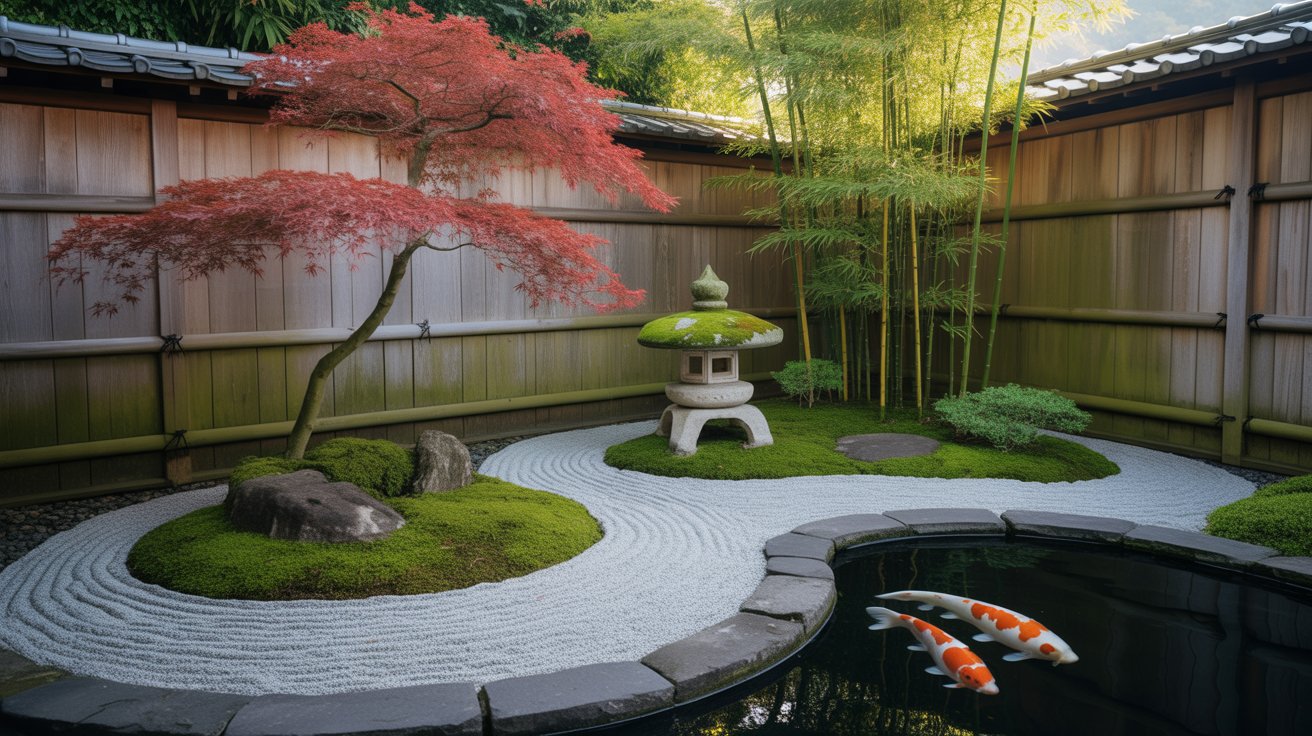
If you’re anything like me, you love the idea of turning even the smallest outdoor space into a peaceful escape. That’s why I put together these 15 small Japanese garden design ideas—perfect for cozy backyards, patios, or even tiny balconies.
I’ve always been drawn to the calm, balanced feel of Japanese gardens, with their natural materials, simple layouts, and soothing touches like stones and water features.
Whether you’re looking to create a quiet spot to unwind or just want to bring a little Zen into your home, these ideas will help you make the most of your space.
1. Use Gravel or Sand for a Zen Feel

Gravel and sand are staples in Japanese gardens, especially in Zen rock gardens (karesansui). These materials mimic water ripples when raked, creating a meditative focal point.
For a more dynamic look, arrange larger stones in groups of odd numbers (like 3 or 5) to represent islands. If you’re short on space, try a shallow wooden tray filled with sand—it’s a portable Zen garden for your desk or balcony.
2. Add a Stone Lantern for Ambiance
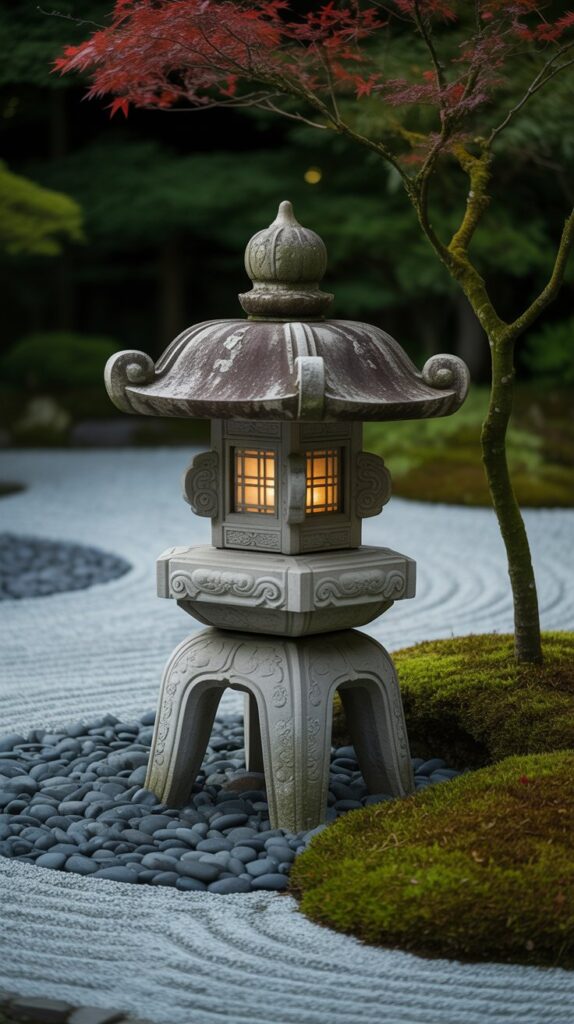
Stone lanterns (tōrō) are iconic in Japanese gardens, providing both light and symbolism. They represent the balance between nature and human craftsmanship. Place one near a water feature or along a pathway to guide the eye and create a focal point.
Smaller lanterns work best in compact spaces. Look for yukimi-gata (snow-viewing) lanterns with wide roofs, which look stunning when dusted with snow or surrounded by moss.
3. Incorporate a Miniature Water Feature

Water symbolizes purity and life in Japanese gardens. Even a tiny bamboo water fountain (shishi-odoshi) or a stone basin (tsukubai) can make a big impact. The sound of trickling water adds a soothing auditory layer to your garden.
If space is tight, consider a wall-mounted fountain or a small ceramic bowl with a solar-powered pump. Position it near seating areas so you can enjoy the sound up close. For a DIY touch, repurpose an old ceramic pot and let water drip slowly over its edges.
4. Plant a Japanese Maple for Year-Round Interest
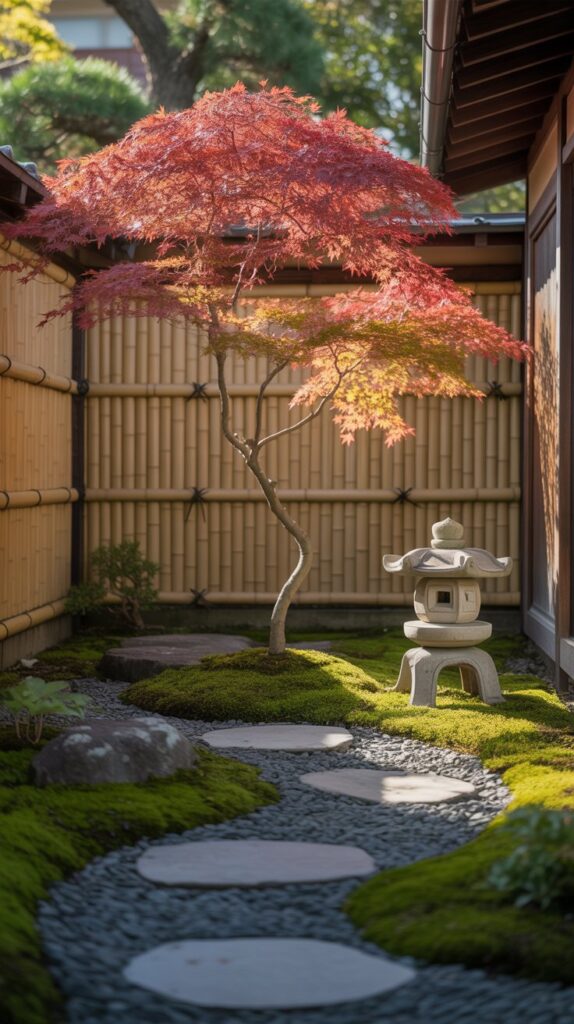
Japanese maples (Acer palmatum) are perfect for small gardens because of their graceful, compact growth. Their delicate leaves turn fiery red in autumn, adding seasonal drama. Dwarf varieties like ‘Shishigashira’ stay under 6 feet, making them ideal for containers.
Place your maple where it can catch the morning or evening light—the translucent leaves glow beautifully. If you’re in a colder climate, grow it in a pot and move it indoors during winter.
5. Create a Moss Garden for Soft Texture
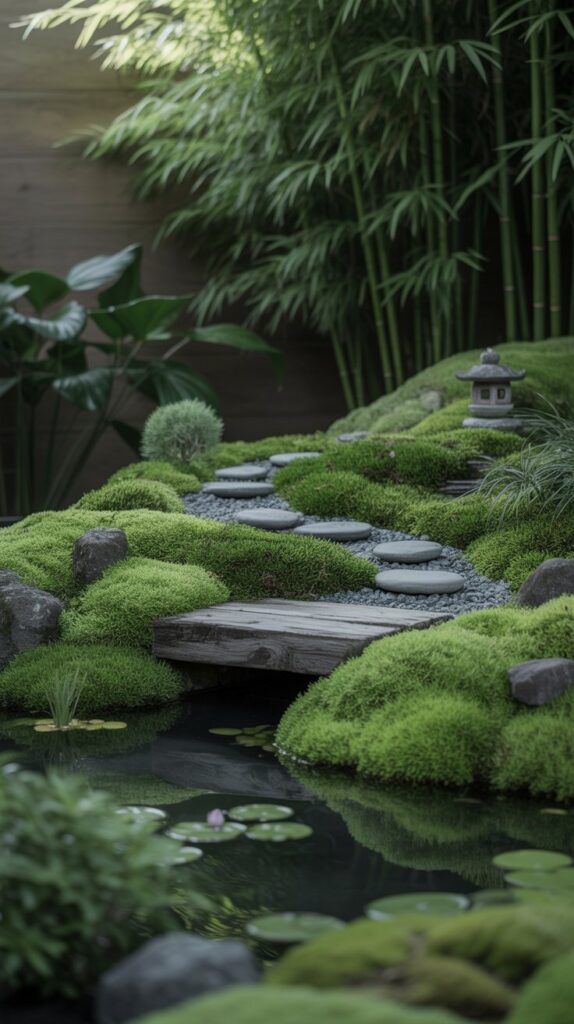
Moss is a low-maintenance alternative to grass, thriving in shady, damp areas. It adds a velvety green carpet that feels magical underfoot. In Japanese gardens, moss symbolizes age and tranquility, often used around stones and lanterns.
Start with patches of sheet moss or cushion moss—they spread slowly but stay lush year-round. Mist them regularly if your climate is dry. For a quirky twist, try kokedama (moss balls) hung from trees or placed on trays.
6. Build a Simple Bamboo Fence

A bamboo fence adds privacy and structure while keeping the garden feeling open. The vertical lines draw the eye upward, making small spaces feel taller. Use thin bamboo poles tied with natural twine for a rustic look.
For a more decorative touch, try a woven bamboo screen (sudare). These lightweight panels filter sunlight and can be moved as needed. If you’re handy, build a low fence around a seating area to define the space without blocking views.
7. Design a Curved Pathway with Stepping Stones
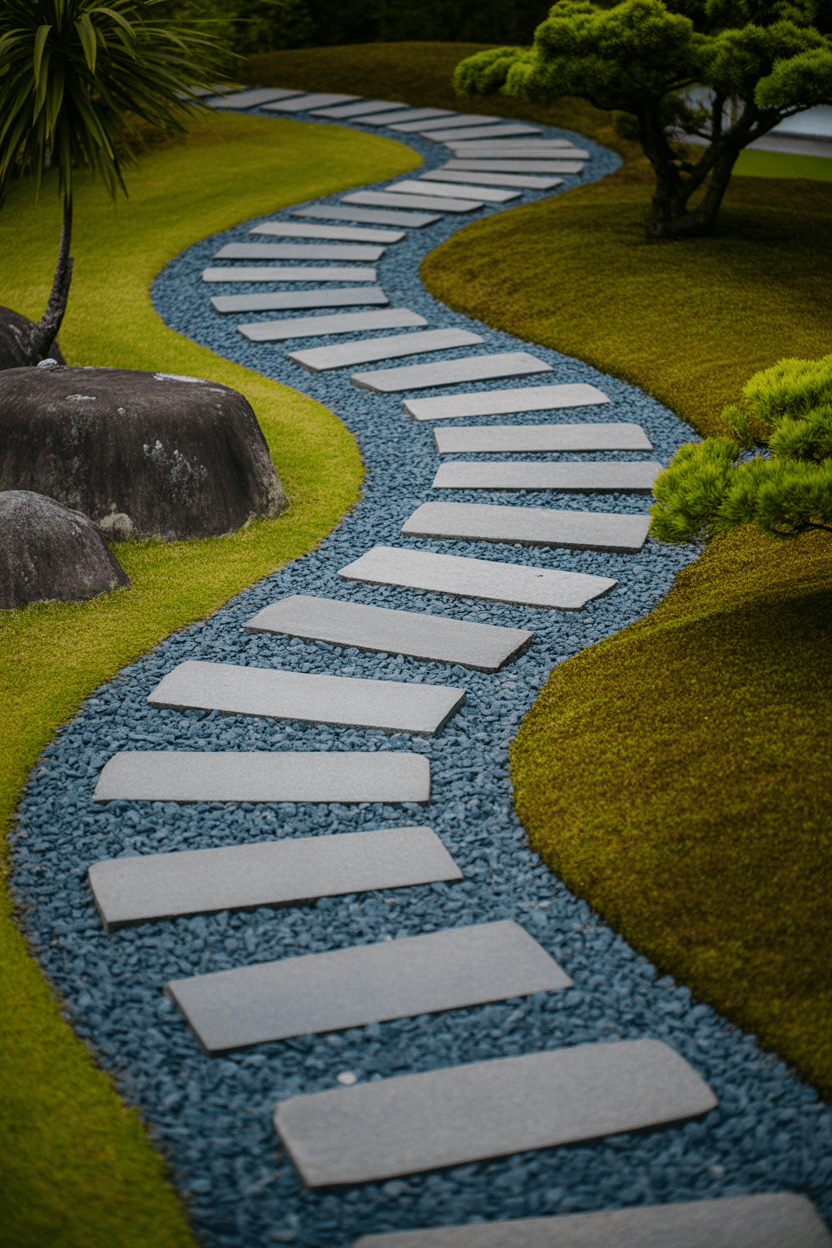
Stepping stones (tobi-ishi) encourage slow, mindful walking. Arrange them in a gentle curve to make the garden feel larger—straight paths shorten the perspective. Use irregularly shaped stones for a natural look, spacing them so they’re comfortable to walk on.
For extra charm, plant dwarf mondo grass or creeping thyme between the stones. These ground covers soften the edges and release fragrance when stepped on. If your garden is tiny, even three or four stones leading to a bench can create a sense of journey.
8. Add a Bench for Contemplation

A simple wooden bench or stone seat gives you a place to sit and enjoy the garden. Choose a spot with a view—perhaps facing the water feature or under the maple tree. The idea is to create a quiet retreat for reflection.
For authenticity, opt for untreated cedar or teak, which weather beautifully. A backless bench works best in small spaces, as it doesn’t dominate visually. Add a cushion in indigo fabric for a pop of color and comfort.
9. Grow Bonsai for Artistic Focus
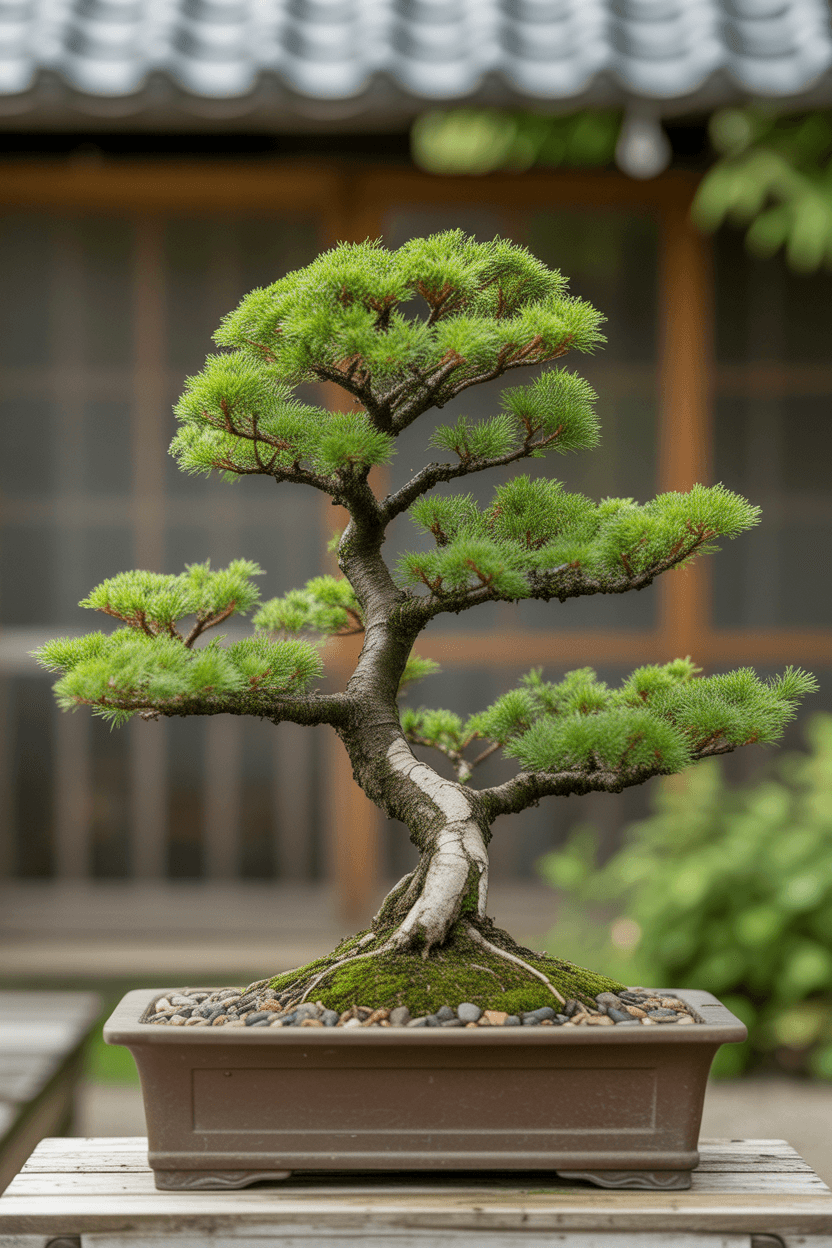
Bonsai trees are living sculptures, perfect for adding artistry to small gardens. Even one well-placed bonsai can become the garden’s centerpiece. Junipers, pines, and maples are classic choices, but flowering varieties like azaleas add seasonal flair.
Keep your bonsai in a shallow ceramic pot to emphasize its miniature scale. Prune and wire the branches to mimic ancient trees. If you’re new to bonsai, start with a pre-trained tree from a nursery—it’s easier than growing from scratch.
10. Use Evergreen Shrubs for Structure

Evergreens like boxwood or Japanese holly provide year-round structure. Their dense foliage can be clipped into soft mounds or geometric shapes, balancing the garden’s natural and manicured elements.
In small gardens, use evergreens as backdrops for more delicate plants. A single trimmed shrub near the entrance can frame the space beautifully. For contrast, pair them with ferns or hostas—their broad leaves break up the monotony.
11. Introduce a Bridge Over a Dry Stream

A small wooden bridge adds whimsy and function, even if there’s no water. Place it over a dry stream bed made of pebbles or a shallow depression lined with stones. The bridge becomes a symbolic transition between different garden zones.
Choose a red-lacquered bridge for a pop of color, or keep it natural with untreated wood. If space is limited, a miniature arched bridge over a tray of sand can evoke the same feeling.
12. Plant Ferns for Lush Greenery
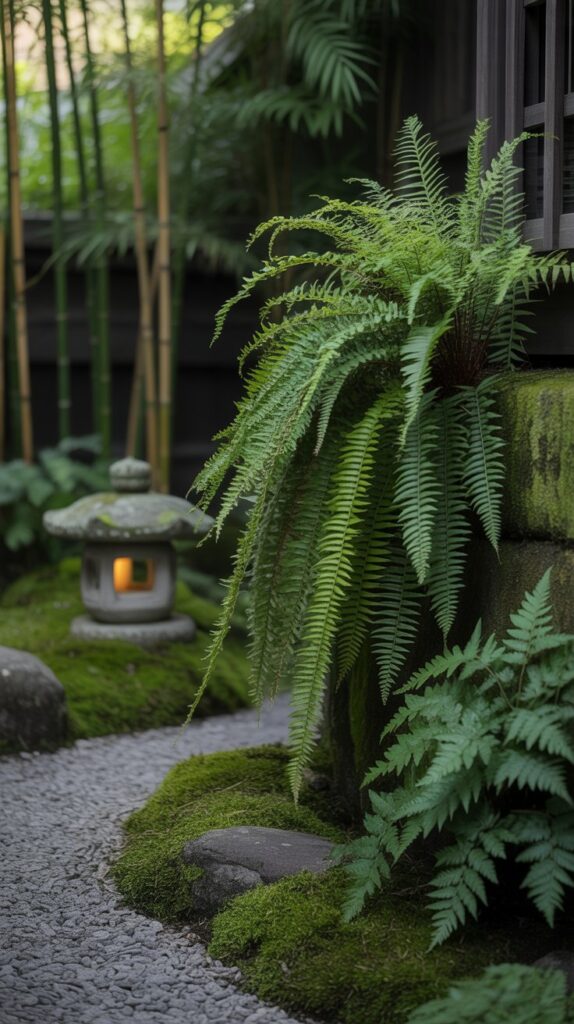
Ferns thrive in shady, humid spots, making them ideal for under trees or along walls. Their feathery fronds add movement and softness, contrasting with harder elements like stones. Japanese painted ferns (Athyrium niponicum) have silvery hues that glow in low light.
Cluster ferns around a water feature or lantern for a woodland vibe. In tiny gardens, hang them in wall planters to save floor space. They’re also great for filling gaps between rocks.
13. Install a Bamboo Water Spout

A bamboo water spout (kakei) is a simple way to add sound and motion. It’s just a bamboo tube angled over a basin, letting water trickle out. The rhythmic dripping is incredibly soothing.
You can DIY one with a bamboo pole and a small pump. Hide the pump in a buried container to keep the look clean. Place the spout near a seating area so you can enjoy its calming effects.
14. Use Neutral Colors for Serenity
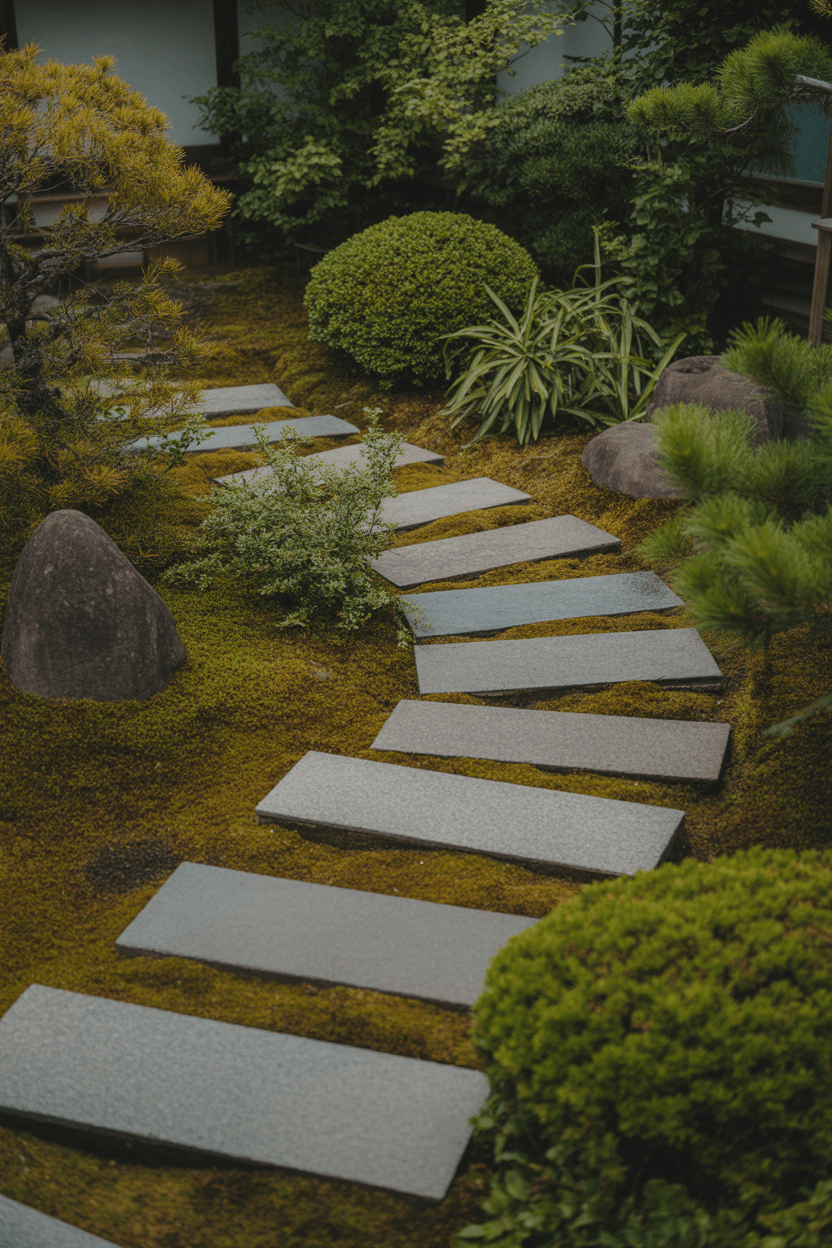
Stick to a neutral palette—greens, browns, grays, and whites—to keep the garden serene. Bright flowers can feel distracting in a traditional Japanese garden. Instead, rely on texture and form for visual interest.
If you crave color, add it sparingly—a single red camellia or a cluster of white hydrangeas. The key is restraint. Even the patina on a copper lantern can provide subtle warmth.
15. Keep It Simple and Uncluttered
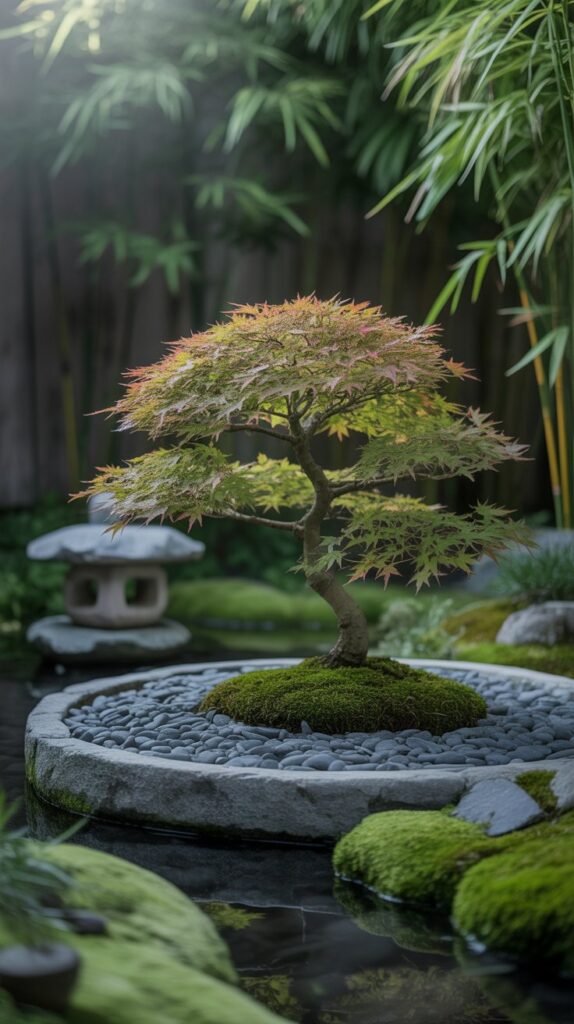
Less is more in Japanese garden design. Avoid overcrowding with too many elements. Each item—whether a stone, plant, or lantern—should have purpose and space to breathe.
Edit ruthlessly. If something doesn’t contribute to the calm and balance, remove it. A single perfectly placed rock can be more powerful than a dozen scattered ones.
- 15 Modern Open Kitchen Designs for a Spacious Look - July 4, 2025
- 20 Stylish Gray Living Room Ideas for a Modern Cozy Look - July 3, 2025
- 15 Easy Home Garden Ideas You Can DIY Today - July 2, 2025







